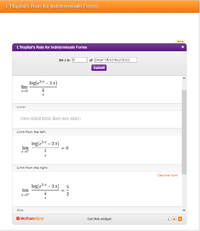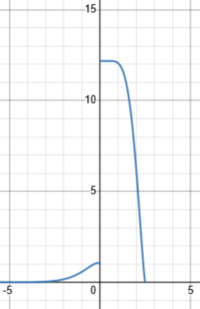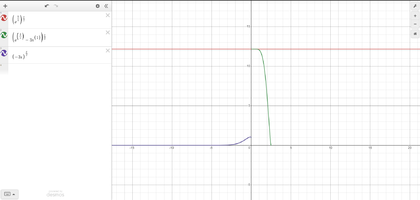Doing a worksheet for class and I was given this problem:
--------
Use l'Hopital's rule to find the exact value of
[math]\lim_{x \to 0} \left(e^{\frac{5}{x}}-3x\right)^{\frac{x}{2}}[/math] .
--------
This is what I have done so far:
[math]\lim_{x \to 0}\ln y=\lim_{x \to 0}\ln\left(e^{\frac{5}{x}}-3x\right)^{\frac{x}{2}}[/math][math]\lim_{x \to 0}\ln y=\lim_{x \to 0}\frac{x\ln\left(e^{\frac{5}{x}}-3x\right)}{2}[/math][math]\lim_{x \to 0}\frac{x\ln\left(e^{\frac{5}{x}}-3x\right)}{2} = 0[/math][math]\lim_{x \to 0}\left(e^{\frac{5}{x}}-3x\right)^{\frac{x}{2}} = \lim_{x \to 0}y = \lim_{x \to 0} e^{\ln y} =e^{0} =1[/math]
The answer key to the worksheet says the answer is actually [math]e^{2.5}[/math], not 1 which is what I and the rest of my classmates got. Is the answer key wrong or am I missing something. Thanks!
--------
Use l'Hopital's rule to find the exact value of
[math]\lim_{x \to 0} \left(e^{\frac{5}{x}}-3x\right)^{\frac{x}{2}}[/math] .
--------
This is what I have done so far:
[math]\lim_{x \to 0}\ln y=\lim_{x \to 0}\ln\left(e^{\frac{5}{x}}-3x\right)^{\frac{x}{2}}[/math][math]\lim_{x \to 0}\ln y=\lim_{x \to 0}\frac{x\ln\left(e^{\frac{5}{x}}-3x\right)}{2}[/math][math]\lim_{x \to 0}\frac{x\ln\left(e^{\frac{5}{x}}-3x\right)}{2} = 0[/math][math]\lim_{x \to 0}\left(e^{\frac{5}{x}}-3x\right)^{\frac{x}{2}} = \lim_{x \to 0}y = \lim_{x \to 0} e^{\ln y} =e^{0} =1[/math]
The answer key to the worksheet says the answer is actually [math]e^{2.5}[/math], not 1 which is what I and the rest of my classmates got. Is the answer key wrong or am I missing something. Thanks!



